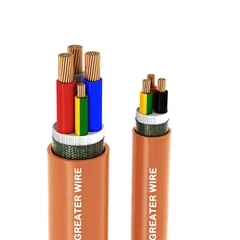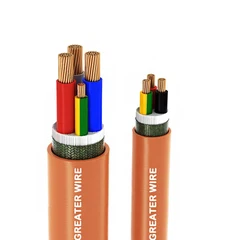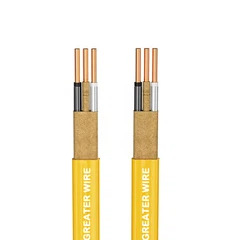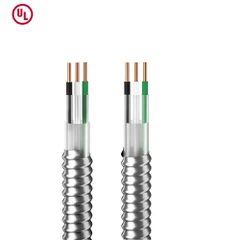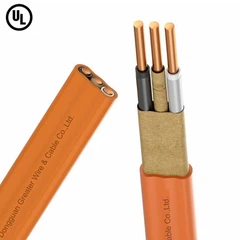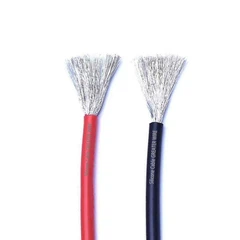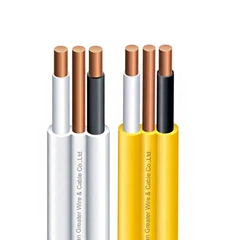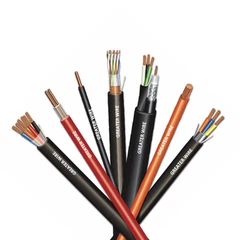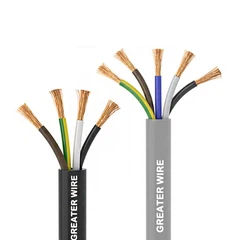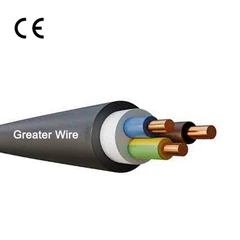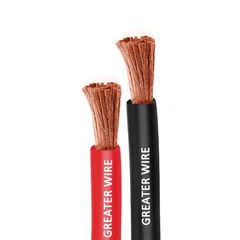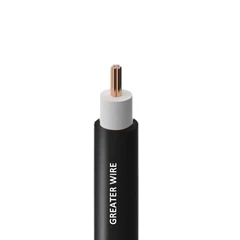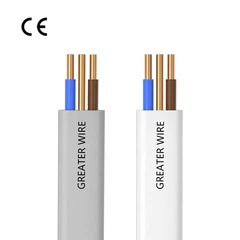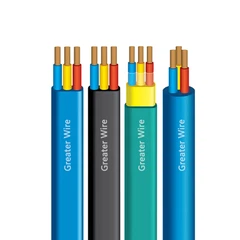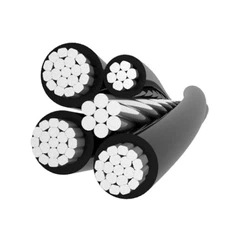In industrial automation and electrical control systems, variable frequency drive (VFD) cables are a key component in connecting the VFD to the motor. With the popularity of VFD applications, the types and specifications of vfd drive cable are also evolving. Shielded and unshielded cables are two common types. They each have their own advantages and disadvantages and are suitable for different applications. Therefore, understanding the difference between shielded and unshielded VFD cables is crucial to correctly select the appropriate cable.

1. Basic composition of VFD cable
vfd drive cable usually consists of the following main parts:
Conductors: Conductors are usually made of copper or aluminum to provide the conductivity required for power transmission.
Insulation: The insulation layer is used to isolate the conductor from the outside world, prevent current leakage, and prevent the cable from short circuiting or electric shock.
Shielding: The shielding layer is located outside the insulation layer and is used to prevent electromagnetic interference (EMI) from entering the cable or to prevent electromagnetic waves emitted by the cable from interfering with other devices.
Jacket: The outer jacket is the outermost layer of the cable, mainly used to protect the internal structure from mechanical damage, chemical corrosion and environmental factors.

2. Features of shielded VFD cable
The biggest feature of shielded VFD cable is that it has a special shielding layer, usually composed of metal foil or braided copper wire. The main function of the shielding layer is to prevent external electromagnetic interference (EMI) from affecting the signal inside the cable, and it can also effectively isolate the high-frequency noise in the cable and prevent it from radiating to the external environment.
1. Electromagnetic Interference (EMI) Protection
Shielded VFD cable effectively isolate external electromagnetic interference (EMI) through the shielding layer to prevent interference to electrical signals in cable transmission. Especially in power transmission and industrial automation systems, there are a large number of electromagnetic noise sources that may affect signal quality, such as motors, inverters, switchgear, etc. Electromagnetic interference not only affects the normal operation of the VFD system, but may also cause failure or malfunction of electrical equipment.
The shielding layer can effectively suppress high-frequency noise, reduce mutual interference between systems, and improve the stability and reliability of equipment.
2. Signal integrity
The signal between the inverter and the motor is controlled by a high-frequency switching signal. If the cable lacks a shielding layer, high-frequency signals may leak and affect nearby control equipment, communication lines, etc. Shielded VFD cables can ensure signal integrity and prevent signal attenuation or distortion during transmission.
3. Longer cable laying distance
In laying over longer distances, the shielding layer can effectively suppress the accumulation of electromagnetic interference, so that the electrical performance of the cable can maintain good stability. Especially in large-scale industrial equipment and complex automation systems, shielded cables can ensure that signal transmission is not interfered with, avoiding signal loss or transmission errors.
4. Anti-external noise influence
Electromagnetic interference sources are common in environments such as power equipment, automation control systems, and factory workshops. If unshielded cables are used, it may cause mutual interference between equipment and affect work efficiency. Shielded cables can effectively reduce the impact of external noise and ensure the normal operation of equipment.
5. The role of ground wire and grounding
The shielding layer of shielded VFD cables is usually grounded to form a safe "leakage" channel. When there is stray current in the cable, the grounded shielding layer can guide these currents to the ground to avoid the harm of current leakage to the system.

3. Characteristics of unshielded VFD cables
Unshielded VFD cables do not have a shielding layer, relying on their good insulation performance and structural design to prevent the influence of electromagnetic interference. Unshielded cables are usually used in environments with less electromagnetic interference or in cable laying over shorter distances.
1. Lower cost
Because unshielded cables lack additional shielding layers, their production costs are lower and they are usually cheaper than shielded cables. This makes unshielded cables suitable for some cost-sensitive projects or short-distance power transmission.
2. Weight and flexibility
Unshielded cables are generally lighter and more flexible because they do not have an additional shielding layer. This makes them easier to bend during installation and are particularly suitable for applications that require flexible laying and compact spaces.
3. Suitable for low electromagnetic interference environments
Unshielded cables are suitable for environments with less electromagnetic interference (EMI). If the cable is laid away from the source of electromagnetic interference or transmits power signals over a short distance, unshielded cables can meet the use requirements while avoiding unnecessary costs.
4. Shorter laying distance
Due to the lack of a shielding layer, the signal of an unshielded cable is easily affected by external electromagnetic waves, especially in long-distance laying, the signal transmitted by the cable may be attenuated. Therefore, unshielded cables are more suitable for shorter cable laying and low-interference environments.
5. No external noise protection
Unlike shielded cables, unshielded cables have no external noise protection function. In an environment with strong electromagnetic interference, the performance of unshielded cables may be affected, causing electrical equipment to malfunction or unstable operation.

4. Main differences between shielded and unshielded VFD cables
1. Structural differences
Shielded cable: There is a layer of metal foil or braided copper wire outside the insulation layer of the cable as a shielding layer to prevent electromagnetic interference.
Unshielded cable: There is no shielding layer, only the insulation layer and the outer sheath.
2. Electromagnetic interference (EMI)
Shielded cable: Effectively prevents external electromagnetic interference, avoids the leakage of internal signals in the cable, and reduces interference with surrounding equipment.
Unshielded cable: There is no protection against external electromagnetic interference, the signal may be interfered by the outside, and it may also affect surrounding equipment.
3. Applicable environment
Shielded cable: Suitable for environments with high electromagnetic interference, such as industrial control systems, long-distance cable laying, and around large electrical equipment.
Unshielded cable: Suitable for environments with less electromagnetic interference, such as short-distance cable laying in homes or small commercial facilities.
4. Cost and weight
Shielded cable: The price is higher and the weight is heavier, which is not suitable for applications with limited budgets or strict requirements on weight.
Unshielded cable: low cost, light weight, suitable for occasions with tight budgets and low requirements for electromagnetic interference.
5. Installation requirements
Shielded cable: requires proper grounding to ensure shielding effect.
Unshielded cable: relatively simple to install, but for environments with strong electromagnetic interference sources, additional protective measures may be required.

5. Considerations when choosing shielded and unshielded VFD cables
Environmental electromagnetic interference (EMI) level: If the cable is installed in an area with strong electromagnetic interference (such as high-frequency equipment, near high-power motors), shielded cable should be selected; otherwise, unshielded cable can meet the needs.
Cable laying distance: For long-distance transmission, shielded cable can effectively protect

